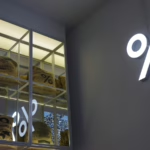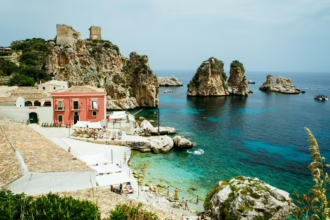Every real estate investor strives for one thing – to increase their wealth. But there are two paths to this goal, radically different in their philosophy, risk and outcomes. At one end of the spectrum stands stable and predictable monthly income. At the other, explosive but more speculative capital growth. This is the eternal debate in the property world: Cash Flow vs. Appreciation.
Choosing between these two strategies is the most important decision you will make because it determines not only what properties you will look for, but your entire approach to investing. In an environment of volatile interest rates and economic uncertainty like we are seeing in 2025, this choice is more critical than ever. To make the right decision, it’s crucial to distinguish whether you’re looking for an investment property vs. own home, as the goals are fundamentally different.
Contents
Definitions
Before we continue, let’s clarify the two key terms.
Cash Flow
Cash flow is the “breath” of your investment. It is the net amount of money left in your pocket at the end of each month, after you have collected all income (rent) and paid absolutely all expenses. You can read our detailed article for more information on the concept of property yield.
- Positive cash flow: the property is self-sustaining and brings you a monthly income. This is the goal.
- Negative cash flow: expenses exceed income and you have to pay extra out of your own pocket every month to maintain the investment.
A cash flow-focused strategy aims to generate income now.
Appreciation
The increase in value, or capital growth, is the rise in the market price of your property over time. This is a “paper” gain that you only realize when you sell the property or refinance it.
- Natural appreciation: due to market factors such as inflation, increased demand, area development, etc.
- Forced appreciation: This is achieved by you making improvements – renovating, remodeling or adding extras that increase the value of the property.
A strategy focused on appreciation aims to build wealth in the future.
Cash Flow Strategy: Living Off Your Properties
This is the classic approach to achieving financial independence through passive income. The goal is to own a portfolio of properties whose monthly cash flow covers your living expenses. The cash flow vs appreciation debate here is settled in favor of security.
Typical properties: apartment buildings, apartments in cities with a stable rental market (e.g. university centres), properties in less “glamorous” but economically stable areas. The focus is on a high rent-to-price ratio.
Advantages:
- Immediate passive income: you receive money in your bank account every month, giving you financial stability and freedom.
- Lower risk in market downturns: even if property prices fall temporarily while your tenants pay rent, your investment is protected and continues to work for you.
- Easier Expansion: steady cash flow makes it easier to get approved for new loans and buy more properties.
Disadvantages:
- Slower wealth accumulation: you will rarely see dramatic jumps in your net worth in a short time. Growth is rather linear.
- More proactive management: dealing with tenants, void periods, repairs and maintenance requires more time and effort. It’s more of a business than a completely passive investment.
“Appreciation” Strategy: Betting on the Future
This is the strategy of patient investors with a vision who are willing to ignore monthly income for the sake of big future profits. In this approach to the cash flow vs appreciation dilemma, the scales are tipped towards the potential for a big hit.
Typical properties: apartments in fast-growing districts of major cities, properties in luxury or popular tourist destinations, houses in areas with upcoming major infrastructure projects.
Advantages:
- Huge profit potential: a few years of strong market growth can generate more wealth than decades of rent collection.
- Less active management: If the property has zero or slightly negative cash flow, but you have a good long-term tenant, there are fewer day-to-day concerns.
- Ownership of “prime” assets: these properties are often in the most desirable and prestigious locations.
Disadvantages:
- High risk and speculative nature: you are effectively betting that the market will move in your direction. A market crash could wipe out all your capital.
- Often requires a surcharge: Many of these properties are cash flow negative, meaning you have to subsidize them from your other income.
- “Paper wealth”: Profit isn’t real until you sell. However, selling can result in high capital gains taxes.
The Hybrid Approach: The Best of Both Worlds?
The most experienced investors rarely choose one extreme. They look for the “Holy Grail” of real estate – a property that:
- Generates positive cash flow from day one (even if it is modest).
- Is located in an area with solid potential for future growth (good demographics, economic development, infrastructure).
This balanced approach minimizes risk (cash flow protects you in downturns) while allowing you to benefit from appreciation over the long term. The choice between cash flow vs appreciation does not have to be mutually exclusive.
So, Which Strategy Is for You?
Answer the following questions, which are part of any sound real estate risk assessment:
- What is your main financial goal?
- Quit my job and live off my income? -> Prioritize cash flow.
- To build a huge fortune for retirement in 20 years? -> Prioritize appreciation (or a hybrid approach).
- What is your risk tolerance?
- I prefer security and hate gambling. -> Cash flow.
- I am willing to take bigger risks for bigger gains. -> Appreciation.
- What is your current financial situation?
- I have limited capital and no other income to cover losses. -> Cash flow (a must!).
- I have a stable and high salary and can afford to subsidize a property for a few years. -> You can afford a strategy focused on appreciation.
Conclusion
The cash flow vs appreciation debate is not a battle with a single winner. These are two different tools to achieve different goals. Cash flow pays your bills today, and appreciation builds your wealth for tomorrow. Before you start looking at properties, take the time to analyze yourself. When you know which port you’re sailing towards – monthly income or long-term wealth – any wind becomes a tailwind, and choosing the right property becomes a much easier task.
This post is also available in: Български









